Replacing a heat pump is a significant task that ensures your home remains comfortable and energy-efficient. A smooth replacement process requires careful planning, expert evaluation, and precise execution. Knowing what to expect can help you prepare for each step and make informed decisions.
Assessing Your Current System
Evaluating the Condition of Your Existing Heat Pump
Before starting a heat pump replacement, it’s essential to assess the condition of your current system. Our professionals will inspect the heat pump to identify any signs of wear and tear, inefficiency, or damage. This evaluation helps us determine if a replacement is necessary or if repairs might suffice. By understanding the current state of your heat pump, we can recommend the best course of action to ensure your home remains comfortable and energy-efficient.
Determining the Right Size and Capacity for Your Home
Choosing the right size and capacity for your new heat pump is crucial for optimal performance. An undersized unit will struggle to heat and cool your home efficiently, while an oversized unit will cycle on and off too frequently, causing unnecessary wear and tear. Our technicians will perform a load calculation, taking into account factors such as the size of your home, insulation levels, and climate conditions. This information allows us to recommend a heat pump that meets your specific heating and cooling needs.
Identifying Any Structural or Electrical Modifications Needed
Replacing a heat pump might require some modifications to your home’s structure or electrical system. Our professionals will identify any necessary changes, such as upgrading electrical panels, reinforcing support structures, or altering ductwork. Addressing these modifications beforehand ensures a smooth installation process and prevents any delays or complications. By preparing your home for the new heat pump, we can ensure that the installation proceeds efficiently and safely.
Selecting the Right Replacement Heat Pump
Choosing Energy-Efficient Models
When selecting a replacement heat pump, it’s important to consider energy-efficient models. Energy-efficient heat pumps use less electricity, reducing your utility bills and environmental impact. Our professionals can guide you through various options, highlighting the benefits of high-efficiency units. By choosing an energy-efficient heat pump, you can enjoy long-term savings and contribute to a more sustainable future.
Understanding Different Types of Heat Pumps
There are several types of heat pumps available, each with its unique advantages. Air-source heat pumps are the most common and are suitable for a variety of climates. Ground-source (or geothermal) heat pumps offer higher efficiency but require a more complex installation process. Ductless mini-split heat pumps are ideal for homes without existing ductwork. Our technicians will help you understand the differences between these options and recommend the best type for your home and specific needs.
Considering Additional Features and Options
Modern heat pumps come with various features and options that can enhance comfort and efficiency. Some units offer variable-speed compressors, which provide more precise temperature control and humidity management. Others include advanced thermostat options, enabling remote control and energy monitoring. Our professionals will discuss these additional features with you, helping you choose a heat pump that offers the best combination of performance, convenience, and value. By considering all available options, you can ensure that your new heat pump meets all your requirements and preferences.
Professional Heat Pump Installation Process
Removing the Old Unit Safely
The first step in the heat pump installation process is safely removing the old unit. Our professionals ensure that the existing heat pump is disconnected properly from all electrical and HVAC systems to avoid any damage or safety risks. We also handle the refrigerant removal in compliance with environmental regulations. By meticulously preparing the old unit for removal, we prevent any potential hazards and set the stage for a smooth installation.
Preparing the Installation Site
Once the old unit is removed, our professionals prepare the installation site for the new heat pump. This involves cleaning and inspecting the area to ensure it’s free of debris and obstructions. Additionally, we check the foundation, supports, and any necessary ductwork to confirm they are in good condition. Proper site preparation is essential for ensuring that the new heat pump operates efficiently and without interruptions.
Installing the New Heat Pump
With the site prepared, our technicians proceed with installing the new heat pump. This step includes positioning the new unit securely and making all necessary mechanical connections. We follow manufacturer guidelines and industry best practices to ensure that the installation is performed correctly. Attention to detail during this stage guarantees that the heat pump will function optimally and have a long service life.
Connecting Electrical Components
The final step in the installation process is connecting the electrical components. Our professionals verify that all electrical connections are secure and meet safety standards. We also integrate the heat pump with your home’s thermostat and other control systems. Ensuring proper electrical connections is vital for the safe and efficient operation of your new heat pump. Once everything is connected, we conduct a series of tests to verify that the system is operating correctly before concluding the installation.
Post-Installation and Maintenance
Testing the New System for Proper Operation
After the installation is complete, our technicians perform a series of tests to ensure the new heat pump is operating correctly. This includes checking the airflow, verifying temperature control, and ensuring that the system is cycling properly. By conducting these tests, we can identify and address any issues immediately, ensuring that your new heat pump functions efficiently from day one.
Providing Maintenance Tips for Longevity
To help you get the most out of your new heat pump, our professionals share essential maintenance tips. We advise on how to keep the unit clean, the importance of regularly changing filters, and the need to monitor the system for unusual noises or performance issues. By following these maintenance guidelines, you can extend the lifespan of your heat pump and maintain its efficiency.
Scheduling Regular Check-Ups and Tune-Ups
Routine maintenance is key to the longevity and efficiency of your heat pump. Our professionals recommend scheduling regular check-ups and tune-ups to keep the system in top condition. During these check-ups, our technicians inspect all components, make any necessary adjustments, and perform tasks like cleaning coils and ensuring proper refrigerant levels. Regular maintenance helps prevent unexpected breakdowns and costly repairs, ensuring your heat pump operates smoothly year-round.
Conclusion
Replacing your heat pump is a significant process that requires careful planning and expert execution. From assessing your current system to selecting the right unit and ensuring a professional installation, each step is crucial. Proper post-installation care and regular maintenance further ensure that your new heat pump operates efficiently and has a long service life.
We take pride in our meticulous approach to heat pump replacement. Our professionals at Oxbow Heating & Cooling will guide you through each step, ensuring that you receive a system tailored to your needs. Don’t leave your home’s comfort and efficiency to chance. Contact our HVAC company today for expert heat pump replacement services that you can trust.





